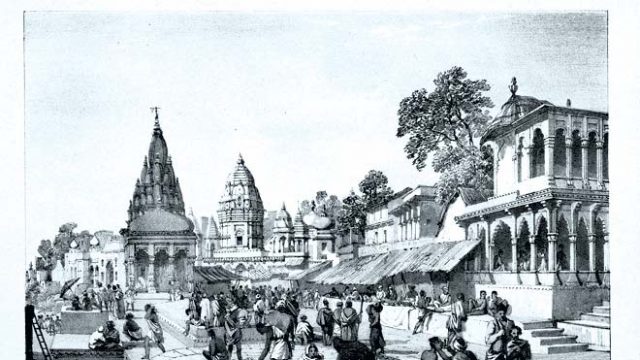Rule Britannia sent many men of fortune, chancers and rapacious thugs to India to help themselves to the wealth of the colony. However, once in a while the Empire also sent some gems. And none shone as brightly as the tragic young James Prinsep, who managed to do much before his untimely death at the age of 31. A second generation colonist (his father John had made a fortune as an Indigo farmer and later became a Member of Parliament) James studied architecture, but had to give it up due to a bad eyesight. He came to India to work at the Calcutta Mint as an assay master in 1819, before being posted to the mint in Benaras. In the 11 years he was there, his genius unfolded. He studied temple architecture and illustrated many specimens in the old city, restored many old monuments, including the minarets of Aurangzeb’s mosque, conducted an accurate survey of Benaras, devised a drainage system for the city and built a bridge.
Returning to Calcutta in 1832, he soon became a leading India expert, primarily as a brilliant numismatist. He established a uniform coinage for India and reforming the Indian system of weights and measures. He then went and deciphered the ancient kharoshti script by studying coins of Indo-Greek rulers, and established the system of reading India’s history through the study of coins that is now prevalent. As the editor of the journal of the Asiatic Society, his crowning moment was the deciphering of the brahmi script of the Ashokan rock edicts, and associating them with the historical figure of Ashoka. His idea of a compilation of Indian historical inscriptions resulted one of the greatest corpus of inscriptions in the world, which essentially began the study of Indian history. He literally worked himself to death, falling ill in 1838, before passing away in London in 1840. A phenomenally talented man, he was a great draughtsman as well, and during his decade in Benaras, he drew some fascinating lithographs of the city ghats, including this one of the Dasaswamedh Ghat. His illustrations were collected and published as Benaras Illustrated in 1830. An elegant memorial to this remarkable man stands by the Hooghly in Kolkata.




